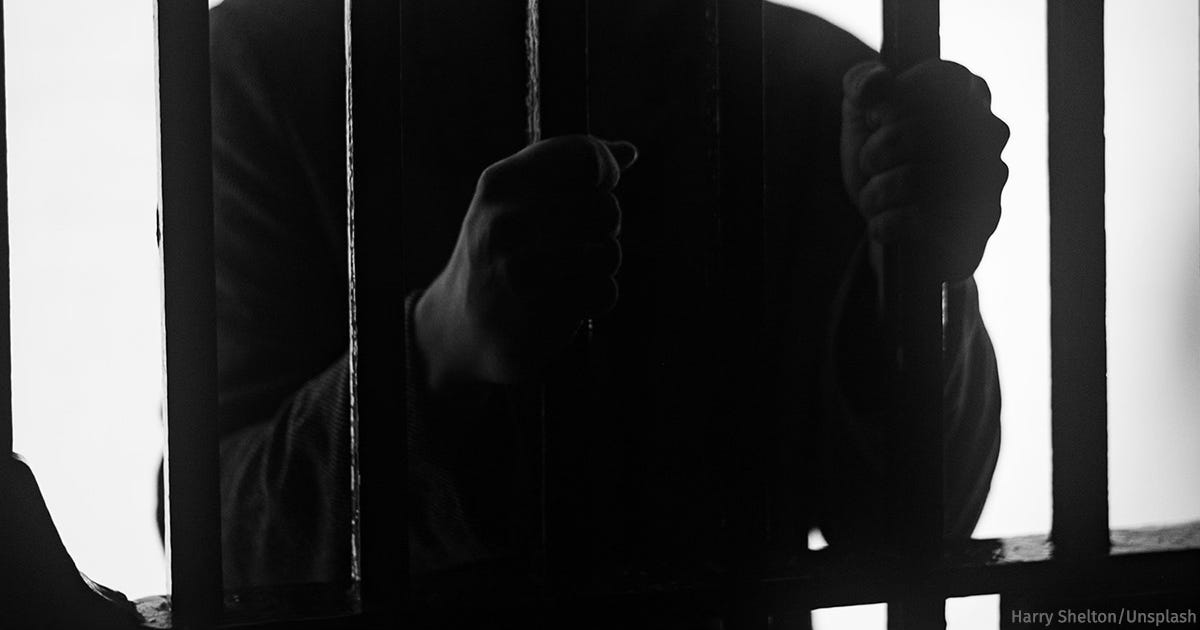Migration and the Caste Divide
Also this week, year-end reviews of Indian prisons and a mechanism to release prisoners, the impact of and financing for the changing climate
IN a week where migration is in focus, our first reported story goes into the villages of Ganjam, in Odisha, where rows of "train compartment houses" stand silent witness to a decades-old migration story. For generations, men like Kamallochan Sahoo have left families behind and boarded the 30-hour train to Surat, Gujarat's textile hub, in search of better prospects. Climate challenges ranging from cyclones, droughts, and floods have steadily eroded traditional livelihoods in this coastal region, pushing many to seek work elsewhere.
But beyond the obvious, this migrant corridor is witness to a more complex tale of caste and opportunity. While the dominant Other Backward Classes (OBCs) have established strong networks in Surat's textile mills, Scheduled Caste workers like Mitika Nayak face discrimination, forcing them to seek alternative destinations like Kerala. Today, even as Surat hosts nearly a million Odia workers, many feel trapped in stagnating wages despite increasing workloads. For workers like Sishir Sahoo, who manages 12 machines for Rs 20,000 monthly, the city represents both opportunity and limitation—an inescapable reality of climate-induced migration. Aishwarya Mohanty reports.
WITHIN the gloomy corridors of Panch Manzila, a five-story building in Surat's Ved Road area, the story of caste discrimination unfolds through shared meals and sleeping quarters. Here, Odia migrant workers from Ganjam district navigate not just physical distances but also deeply entrenched social barriers that have followed them from their villages. The faces of this story are the likes of Akul Dandapani Nahak, who openly admits to screening workers by caste, and Debraj Sethi, who runs a mess exclusively for his own Dalit community because upper castes won't eat food cooked by them. While some spaces like Bhimbadar Samudra's mess attempt integration, even there the kitchen remains an upper-caste domain.
These living arrangements reflect broader patterns of social segregation that persist despite economic advancement through migration. All of this is why younger migrants are increasingly choosing southern states over traditional destinations, seeking not just better wages but also an escape from entrenched hierarchies, though experts warn that caste structures often follow close behind irrespective of where they go. The second part of our series on migration by The Migration Project and IndiaSpend is reported by Shreehari Paliath.
THE stark reality of climate change confronts us as 2024 heads to its close: the year just ending stands as Earth's warmest on record, with India bearing witness to nature's intensifying extremes. From Kashmir's bitter minus 8 degree cold wave to Mumbai's record December heat, the nation's climate narrative unfolds through a series of unprecedented weather events.
At the epicentre of this environmental crisis is a contentious financial dispute that came to a head at COP29 in Azerbaijan. While developed nations agreed to triple climate finance to $300 billion by 2035, India's representatives dismissed this figure as "paltry" against the backdrop of the actual needs of developing nations, which India and other nations have estimated at $1 trillion annually.
The human cost of climate change in India this year has been particularly severe: over 40,000 heatstroke cases, more than 100 heat-related deaths, and the tragic Wayanad landslide that claimed 200 lives are merely exemplars. These events underscore the urgent need for climate adaptation funding, particularly for developing nations who have contributed least to global warming but bear its heaviest burdens.
As 2025 approaches, the inadequate financial commitment threatens to derail global climate action, potentially pushing warming beyond 3°C—a threshold our world cannot afford. Tanvi Deshpande reports.
IN the crowded warrens that are India's prisons, the human cost of delayed justice weighs heavy. Despite several recent reforms and Supreme Court interventions, over half a million people remain behind bars, with three out of every four still awaiting trial.
The story of India's prison crisis is reflected in those among the 422 prisoners who couldn't find legal representation, and in those who are unable to afford even basic bail. While review committees identified 24,100 prisoners for potential release, fewer than half of those actually walked free, highlighting the gap between policy promises and human reality. The system particularly impacts the poor and marginalized, transforming temporary detention into prolonged confinement against every principle of natural justice. Shreehari Paliath reports.
Video: A documentary explores the looming food-fuel conflict triggered by India's blending of fuel with ethanol, which is intended to reduce carbon emissions. But meeting stated goals will require producing 11-12 million tonnes of maize and rice, 275 million tonnes of sugarcane over 7.1 million hectares of land. The consequences could, as explained in the video report, be devastating to the environment as it entails a greater reliance on water, pesticides, and fertilisers. Watch the story:
IndiaSpend Hindi features a year-ender report on climate change and its impact on Uttarakhand, seen in its drying acquifers, increasingly landslide-prone hills, and frequent and devastating forest fires. Varsha Singh reports on a disastrous year that was.







